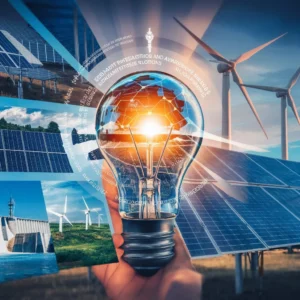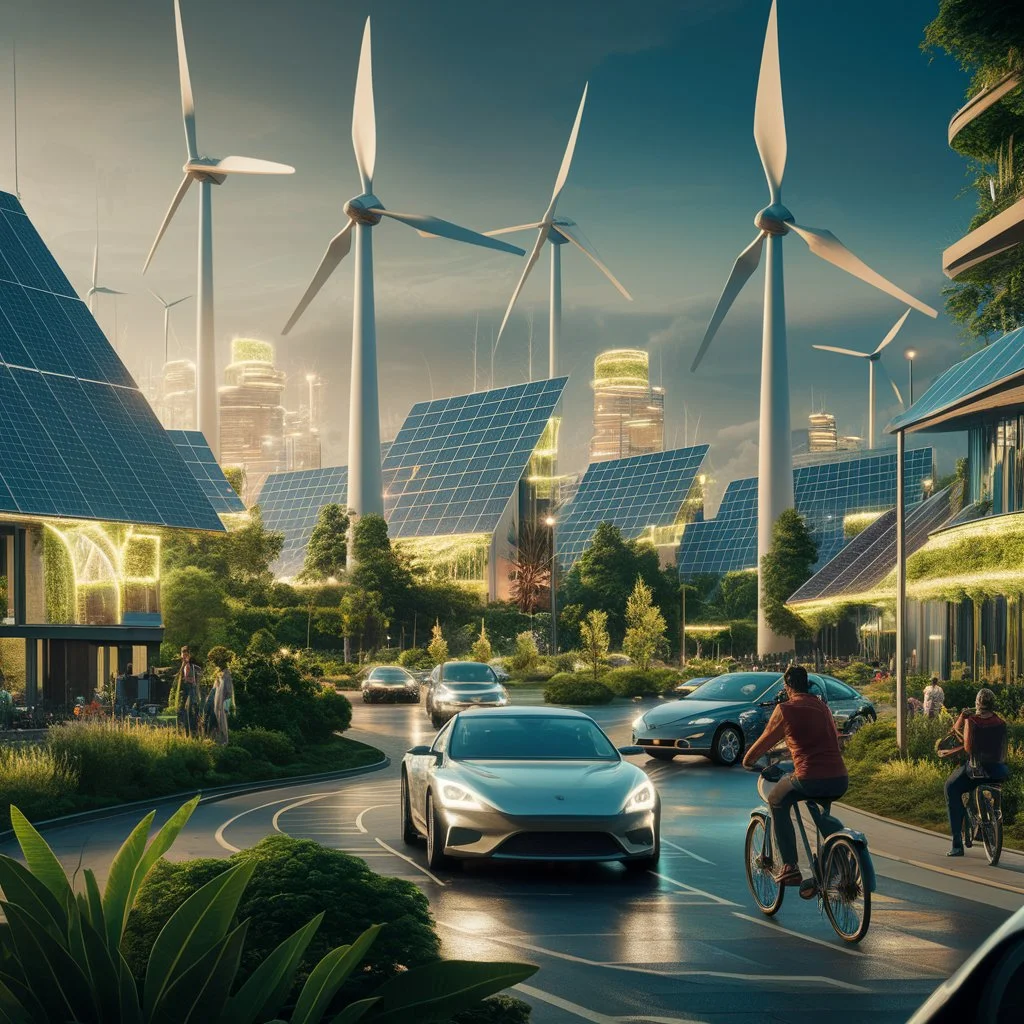In a world where the impacts of climate change are becoming increasingly evident, the need for sustainable solutions has never been more urgent. As we stand at the crossroads of innovation and responsibility, one powerful catalyst emerges: education “Cultivating a Sustainable Future: The Role of Education in Advancing Renewable Technologies,” explores how knowledge and awareness can empower individuals and communities to drive forward the renewable revolution. From classrooms buzzing with ideas to cutting-edge research labs pushing boundaries, discover how educating minds today paves the way for an eco-friendly tomorrow. Join us on this enlightening journey as we uncover how cultivating curiosity about renewable technologies can sow seeds of sustainability that will flourish for generations to come!
1. The Importance of Sustainable Development
As our planet faces unprecedented environmental challenges, the quest for sustainable development has never been more crucial. The urgency to shift from traditional energy sources to renewable technologies is palpable. But how do we drive this change? Education plays a pivotal role in not just informing individuals but also inspiring action toward sustainable practices. It empowers people with knowledge and skills necessary to harness the potential of renewable energy solutions.Understanding Renewable Technologies
Renewable technologies are key players in the quest for sustainable energy. They harness natural resources, like sunlight, wind, and water, to produce clean power. Solar panels convert sunlight into electricity. Wind turbines capture wind energy to generate power. Hydropower facilities utilize flowing water from rivers and dams.
Renewable energy
Renewable technologies encompass energy sources that naturally replenish within a human timeframe. They offer alternatives to fossil fuels, contributing to reduced greenhouse gas emissions and promoting sustainability.
Solar energy
Solar energy is one prominent example. It harnesses sunlight through photovoltaic cells or solar thermal systems, transforming it into usable electricity or heating solutions. Wind power stands out as well, using turbines to convert wind kinetic energy into electrical power
Hydropower
Hydropower relies on water flow, typically from rivers or dams, to generate electricity. Biomass energy utilizes organic materials like plant matter and waste for fuel production.
Geothermal energy
Geothermal energy taps into the Earth’s internal heat for direct heating or electricity generation. Each of these technologies plays a crucial role in our quest for cleaner and more efficient ways to meet global energy demands while minimizing environmental impact.
Advantages and Disadvantages
Renewable technologies come with a mix of benefits and challenges. On the positive side, they significantly reduce greenhouse gas emissions. This is vital for combating climate change and its effects on our planet.
These technologies also promote energy independence. Countries can harness their natural resources, reducing reliance on fossil fuel imports.However, there are drawbacks to consider as well. Initial costs for renewable infrastructure can be high, presenting barriers to widespread adoption. Transitioning from traditional systems often requires substantial investment and time.Additionally, some renewable sources depend heavily on weather conditions. Solar and wind energy production can fluctuate based on environmental factors, creating reliability issues in supply chains.
The Current State of Education on Renewable Energy
Education about renewable energy is crucial but still faces significant hurdles. Many institutions struggle to incorporate comprehensive programs focused on renewable technologies. This gap limits students’ understanding of sustainable practices.
Challenges in curriculum development are rampant. Outdated materials often fail to cover the latest advancements, leaving a knowledge void for future innovators. Moreover, there’s a lack of trained educators who can effectively teach these subjects.Government initiatives have emerged to address some of these issues. Grants and funding support schools that prioritize green education. However, accessibility remains uneven across different regions.
Gaps and Challenges
Despite the growing importance of renewable energy, significant gaps exist in education systems worldwide. Many institutions still lack comprehensive curricula that focus on sustainability and renewable technologies. This shortfall leaves students unprepared for careers in this vital sector.
Moreover, outdated teaching methods can hinder engagement. Traditional approaches often fail to capture the dynamic nature of renewable energy advancements. Students need interactive and hands-on learning experiences to truly grasp these concepts.
Another challenge lies in accessibility. In many regions, educational resources about renewable technologies are limited or non-existent. This creates disparities where only a select few have access to knowledge that could shape their futures.
Lastly, societal attitudes towards sustainability play a role too. There remains skepticism about climate change and its impacts, which can affect student interest in pursuing studies related to renewables. Addressing these gaps is crucial for fostering an informed generation ready to tackle environmental challenges head-on.
Government Initiatives and Programs
Governments around the world are recognizing the urgency of renewable energy development. They have launched various initiatives aimed at integrating sustainable practices into education systems.One notable example is funding for educational programs that focus on solar, wind, and other renewable technologies. These grants support schools and universities in creating specialized curricula.In addition to financial backing, governments often partner with local organizations and businesses. This collaboration brings real-world experience into classrooms, bridging gaps between theory and practice.
Many countries also promote community awareness campaigns. These initiatives highlight the benefits of clean energy while encouraging public participation in sustainability efforts.Furthermore, some nations offer incentives for institutions that adopt green technologies on campuses. Such measures not only enhance learning environments but also inspire students to advocate for change within their communities.
The Role of Education in Advancing Renewable Technologies
Education serves as a powerful catalyst in advancing renewable technologies. By providing individuals with knowledge about sustainable practices, it fosters innovation and critical thinking.
Schools and universities play a pivotal role in this journey. They can inspire students to explore careers in green energy fields. Courses on solar energy, wind power, and sustainable agriculture help develop the next generation of experts.Moreover, community programs raise awareness about local renewable initiatives. Workshops can teach practical skills like installing solar panels or creating efficient energy systems.Professional development for current workers is equally important. Regular training ensures that industry professionals stay updated on new technologies and methods.
Through these educational efforts, we empower individuals to make informed choices that benefit both their communities and the planet. Engaging with diverse learning platforms ignites passion around sustainability issues while cultivating responsible stewards of our environment.
Educating the Youth: Encouraging Interest and Action
Educating the youth is a crucial step toward advancing renewable technologies. Young minds are often more open to new ideas and innovations. By integrating renewable energy topics into school curricula, we cultivate curiosity and passion.
Interactive workshops can spark interest in solar panels, wind turbines, and bioenergy solutions. Hands-on activities allow students to experiment with these technologies firsthand. This experiential learning helps them grasp complex concepts while having fun.
Clubs focused on sustainability can encourage collaboration among peers. Students working together on projects not only learn but also inspire one another to take action.
Field trips to renewable energy sites or local projects provide real-world context. Seeing the impact of these initiatives motivates young people to engage further in sustainability efforts.
Encouraging discussions about climate change and clean energy at home fosters awareness beyond the classroom too. When families talk about these issues, it reinforces what kids learn at school and inspires collective action.
Training and Development for Professionals in the Field
Training and development are essential for professionals in the renewable energy sector. As technologies evolve, continuous learning becomes a necessity. Specialized programs offer insights into solar, wind, and bioenergy systems. These courses enhance technical skills necessary for implementation and maintenance.Hands-on experience is also crucial. Workshops allow participants to engage with cutting-edge tools and techniques directly. This practical exposure builds confidence and expertise.
Networking opportunities provided through these programs help establish connections within the field. Professionals can share experiences and learn from each other’s successes or challenges.
Investing in training ensures a skilled workforce ready to tackle sustainability challenges head-on while driving future innovations forward
Successful Implementation of Education for Sustainability
One compelling example of successful education for sustainability is the Green Schools initiative in Bali, Indonesia. This program integrates environmental studies into the curriculum. Students engage in hands-on projects to create sustainable gardens and learn about renewable energy sources.
Another standout case is the Solar Energy Innovation Network. This U.S.-based program partners schools with local governments to implement solar power solutions on campuses. It not only reduces energy costs but also teaches students about the benefits of clean energy.
In Germany, numerous universities have adopted interdisciplinary programs focusing on renewable technologies. These institutions offer degrees that combine engineering, environmental science, and policy-making to produce well-rounded graduates ready to tackle climate issues.
These cases illustrate how targeted educational efforts can lead to tangible results, fostering a generation equipped with knowledge and skills for a sustainable future.
Overcoming Challenges and Resistance to Change
Resistance to change is a common barrier in promoting renewable energy. Many individuals and organizations cling to traditional practices due to fear or uncertainty.
Addressing these concerns requires clear communication about the benefits of renewable technologies. Education plays a crucial role here, as it provides the necessary knowledge and dispels myths surrounding new methods.
Another challenge lies in ingrained habits and outdated mindsets. People often resist altering their routines for unfamiliar options. Engaging communities through workshops can foster openness towards innovative solutions.
Additionally, financial concerns often limit transitions to greener alternatives. Educational programs that highlight economic incentives can help alleviate these worries by showcasing long-term savings associated with sustainable choices.
Finally, collaboration among stakeholders—governments, educational institutions, and businesses—is essential for creating a supportive environment that promotes adaptation and embraces change wholeheartedly.
Educating for a Sustainable Future”
A sustainable future is within reach, largely through the power of education. By fostering a culture that prioritizes renewable energy and environmental awareness, we can inspire new generations to innovate and adopt sustainable practices. Education serves as the foundation for understanding complex renewable technologies.
As students gain knowledge about clean energy sources—like solar, wind, and hydro—they also develop critical thinking skills that enable them to address global challenges. This understanding encourages a mindset focused on sustainability.Moreover, training programs tailored for professionals in the field that those currently working with renewable technologies are equipped with up-to-date knowledge. Continuous professional development creates experts who can lead advancements in these vital areas.
Real-world case studies illustrate the positive impact of educational initiatives on community adoption of renewable solutions. These examples serve as powerful motivators for both individuals and organizations.

